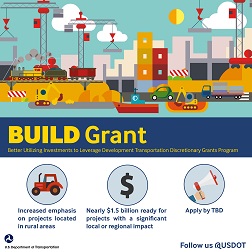Urbanized Area Formula Grants - 5307

Overview
The Urbanized Area Formula Funding program (49 U.S.C. 5307) makes federal resources available to governors and other recipients for transit capital and operating assistance and transportation-related planning in urbanized areas. An urbanized area is an area that has been defined and designated by the U.S. Department of Commerce, Bureau of the Census as an 'Urban Area' with a population of 50,000 or more.
Learn about transportation coordination and the Coordinating Council on Access & Mobility, which aims to reduce overlap between the 130 CCAM programs across nine agencies that may fund human services transportation and incentivize collaboration.
Apportionments
- FY 2025 (partial year): $3,257,010,123
- FY 2024: $7,245,004,560
- FY 2023: 7,060,120,714
- FY 2022: 6,920,874,612
- FY 2021: 5,375,259,282
- FY 2020: 5,371,536,821
- FY 2019: 5,262,516,268
- FY 2018: 5,137,177,613
- FY 2017: 5,010,807,790
- FY 2016: 4,911,077,833
- FY 2015: 4,823,914,787
Eligible Recipients
Funding for urbanized areas with a population of 200,000 or more is made available to designated recipients that are public bodies with the legal authority to receive and dispense federal funds. For urbanized areas with a population of 200,000 or more, governors, responsible local officials and providers of publicly owned public transportation service shall select a designated recipient to receive and apportion funds to eligible projects and recipients within the urbanized area.
Funding for urbanized areas with a population of between 50,000 and 199,999 is made available to a State's or territory's governor or governor's designee. For urbanized areas with a population of less than 200,000, the governor or governor's designee is responsible for receiving and apportioning funds to eligible projects and recipients.
Eligible Activities
Eligible activities include: planning, engineering, design and evaluation of transit projects and other technical transportation-related studies; capital investments in bus and bus-related activities such as replacement, overhaul and rebuilding of buses, crime prevention and security equipment and construction of maintenance and passenger facilities; and capital investments in new and existing fixed guideway systems including rolling stock, overhaul and rebuilding of vehicles, station infrastructure, track, signals, communications, and computer hardware and software. In addition, associated transit improvements, workforce development activities, and certain expenses associated with mobility management programs are eligible under the program. All preventive maintenance and some Americans with Disabilities Act complementary paratransit service costs are considered capital costs.
For urbanized areas with populations less than 200,000, operating assistance is an eligible expense. Urbanized areas of 200,000 or more may not use funds for operating assistance unless identified by FTA as eligible under 49 U.S.C. 5307(a)(2) and (3).
Statutory Reference
49 U.S.C. 5307
Funding Availability
Funds are available the year appropriated plus five years.
Allocation of Funding
Funding is apportioned based on legislative formulas. For urbanized areas of 50,000 to 199,999 in population, the formula is based on population, low-income population, and population density. These urbanized areas are also eligible to receive Small Transit Intensive Cities (STIC) funds if transit service provided in the urbanized area meets or exceeds the STIC performance criteria.
For urbanized areas with a population of 200,000 or more, the formula is based on a combination of bus vehicle revenue miles, bus passenger miles, fixed guideway vehicle revenue miles, fixed guideway directional route miles, fixed guideway passenger miles, and operating expenses, as well as population, low-income population, and population density.
View the FY 2023 5307 Apportionment Formula.
Match
The federal share is not to exceed 80 percent of the net project cost for capital expenditures. The federal share may be 85 percent for the acquisition of vehicles and 90 percent for the cost of vehicle-related equipment or facilities (including clean fuel or alternative fuel vehicle-related equipment or facilities) for the purpose of complying with, or maintaining compliance with, the Americans with Disabilities Act and the Clean Air Act. The federal share may not exceed 50 percent of the net project cost of operating assistance.



 U.S. DOT’s Better Utilizing Investments to Leverage Development (BUILD) Transportation Discretionary Grants program funds investments in transportation infrastructure, including transit. BUILD Transportation grants replace the Transportation Investment Generating Economic Recovery (TIGER) grant program. Learn more about
U.S. DOT’s Better Utilizing Investments to Leverage Development (BUILD) Transportation Discretionary Grants program funds investments in transportation infrastructure, including transit. BUILD Transportation grants replace the Transportation Investment Generating Economic Recovery (TIGER) grant program. Learn more about